
Art and Research
- Home
- Art and Research
- Pre-Columbian and Western Art
Pre-Columbian and Western Art
Pre-Columbian and Western Art Collection
The collection of Pre Columbian art donated by Mr & Mrs Heeramaneek represents the principal cultures of the Pre- Columbian world. An exquisite collection of artefacts from Mexico, Peru, Argentina, Costa Rica, Nicaragua and other regions of South America are a part of the National Museum collection.
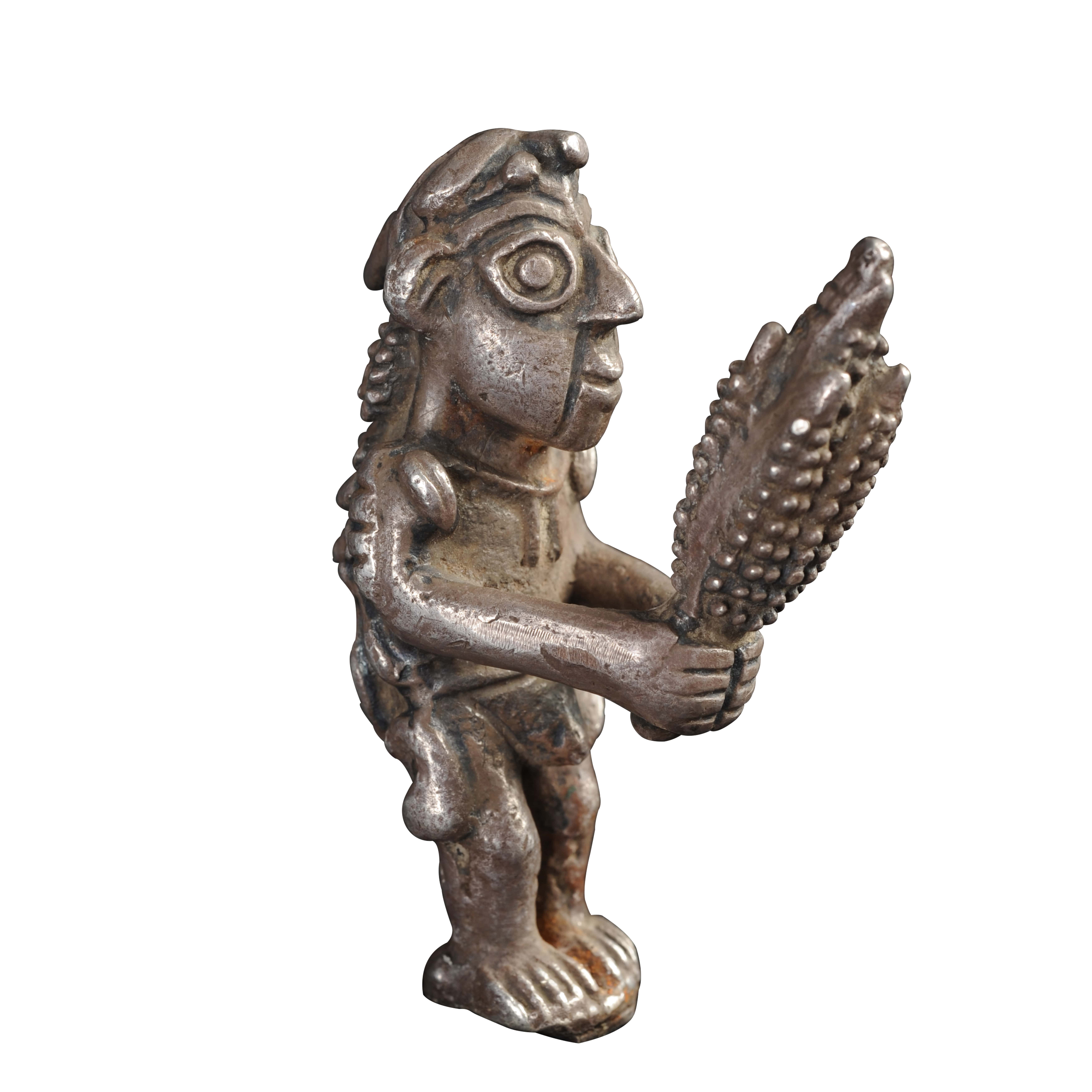
Pre-Columbian and Western Art Collection
Corn-God 67.565 Silver Peru Ht.-7.9 cm. Weight : 225.6 gr. Solid cast silver male figure standing on a circular base. holding an ear of corn, with both hands bent at the elbow. the cheeks and nose are prominent: two concentric circles serve as eyes. The head dress consists of corn leaves: fruits and vegetables are attached to the costume. The figure falls into the 60 category known as the "God of Glyph". This god can also be identified as Piteo Cozobi, the God of Abundant sustenance, Lord of the fields of Maize.

Pre-Columbian and Western Art Collection
Male Portrait Vessel Mochica, Peru 200-700 C.E. Clay Size: 16.5x 16 cm Acc. No. 67. 246 This Vessel is in the shape of a human head, almost half of the natural size of an actual head. Hardly betraying any signs of being a vessel, the artefact, vividly conceived and so close to reality, looks like a replica of a human head. The face has a painted pattern in the centre. The naturalistic representations of human faces are unique to the Moche culture of Peru. They are thought to represent secular and religious dignitaries. Large numbers of portrait heads have been found in the graves. Most probably these were certain highly regarded personalities, whose heads were thought to possess beneficial powers and ed the ancient Peruvians to place them in graves. These ceramic heads were cast in moulds and more or less show the same features. The portrait head shows their face painted. Curiously, all these were intended as a drinking vessel for the living and the dead.
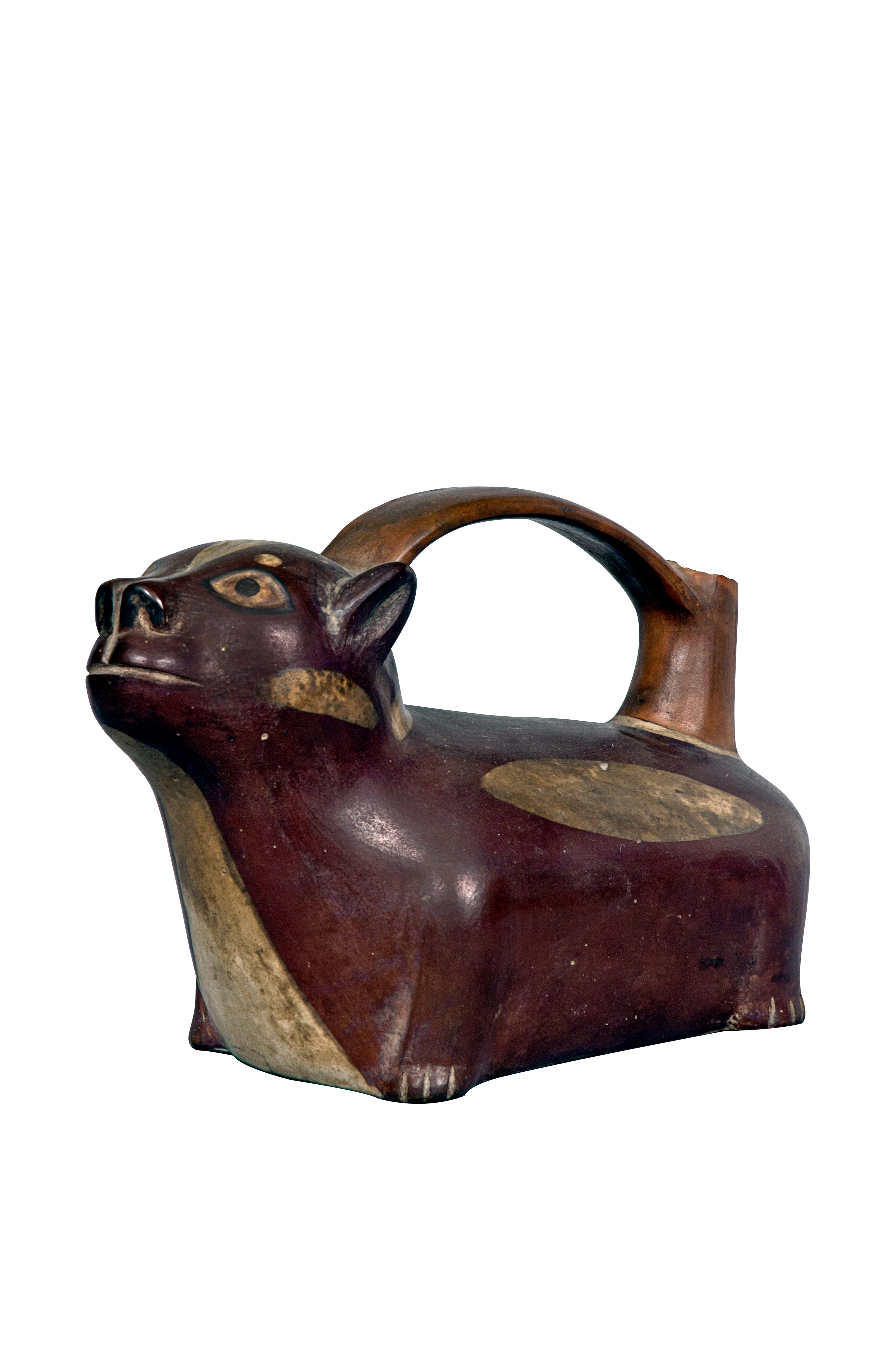
Pre-Columbian and Western Art Collection
Pot Modelled Like an Animal Nazca, Peru 300-650 C.E. Clay Size: 11.5x 17.7 cm. Acc. No. 67.289 This elongated figure of a cat-like animal with eyes fixed on its prey is a novel of a serving pot- a kettle with a spout and a handle. The handle replacing the cat’s tail. The white-spotted deep brown cat, with its legs, gathered completely under its fur, upwards turned face, ears raised as to when extra vigilant and closed mouth as when fixed at the target, is poised fully to charge at its prey the moment it detected its slightest movement. As almost all early culture reveal, conceiving articles of day-to-day use, especially pottery, in personalized s or the s of familiar animals, domestic or others, was a common practice of potters all over, and this spouted pot is one of its examples. This pot with handle and spout in the of a cat evidences a certain extent of evolution in the art of clay modelling which blended an art ; any naturalistic of an animal and human being with a utility article. The artefact is painted reddish-brown with patches of off-white, baked with high-temperature firing and beautifully finished and polished.

Pre-Columbian and Western Art Collection
Bowl Mixtec, Mexico 1200–1521 C.E. Clay Size: Ht. 13.7, Dia. 18.2 cm. Acc. No. 67.420 Tripod bowl with high relief painted decoration in white against the red ground on the outer surface. Oaxaca, on a height near this city, was Monte Alban, a large site of long history, associated with the Zapotec culture and in the plain, Mitla, associated with the Mixtecs, who came into prominence in the region about 1000 C.E. The effigy vessels are typical of Zapotec pottery. Their influence is recognized in the geometric in the set stone mural decoration of Mitla, for abstract patterns, that resemble that decorative stone mosaic, are found on their pottery. Their culture included several important sites, extending to Cholula in the state of Puebla on the high cultural plateau. The Mixtec dominance of the Oaxaca Puebla regions gave place to that of the Aztecs in the fourteenth century.
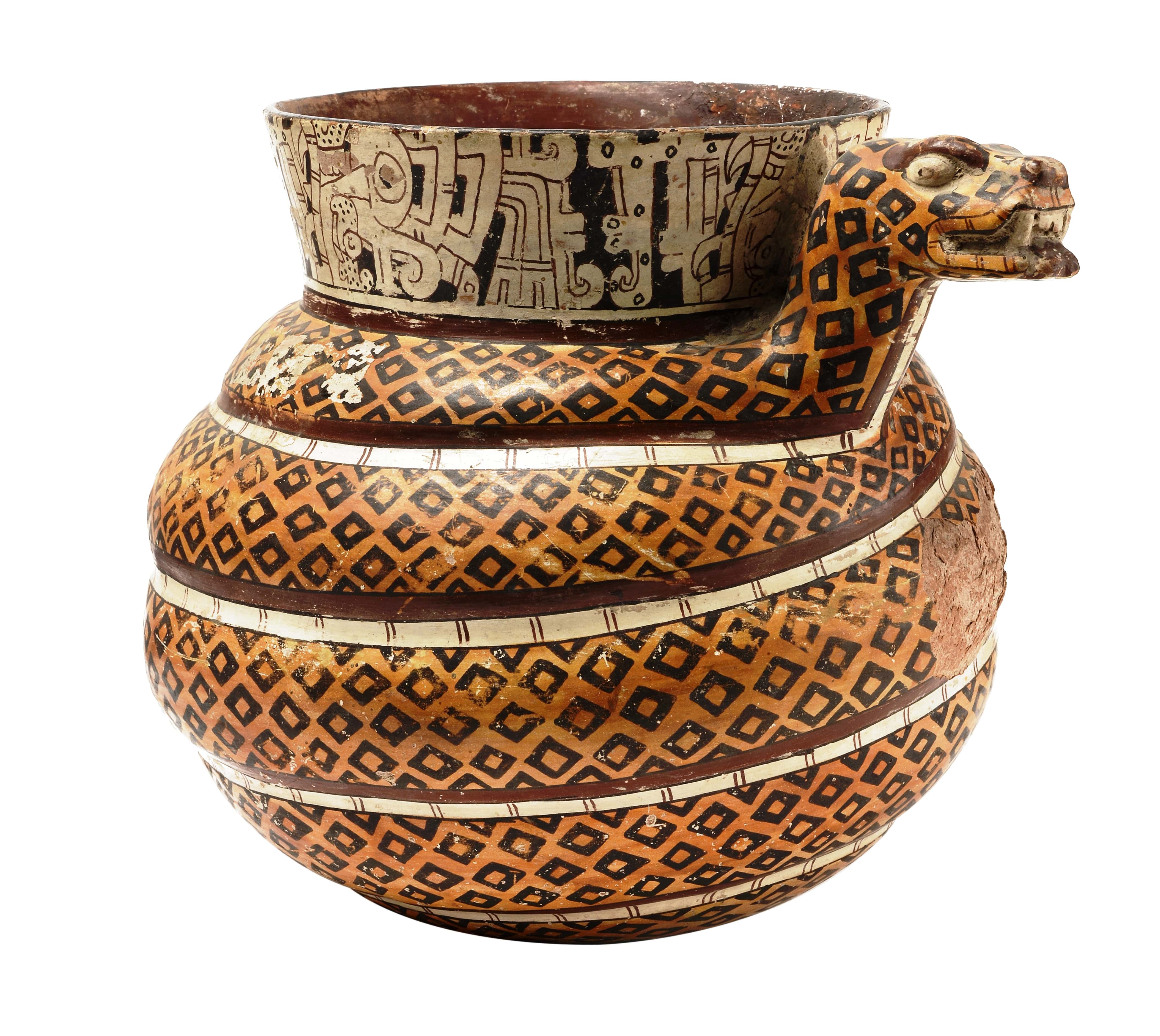
Pre-Columbian and Western Art Collection
Coiled Serpent Jar Mexico 1200-1500 C.E. Terracotta Size: Ht. 19.6 cm, Dia. 15.5 cm. Acc. No. 67.421 In Mexican mythology, the snake is a symbol of veneration, worship and honour often a symbol of great power, rebirth and resurrection and a powerful emblem of renewal and transition also. The snake is recognized as a symbol of humanity as a whole. It also provides hope for mankind to aspire to great heights as it correlates the shedding of the serpent’s skin to a human’s ability to change his circumstances and overcome adversity. This effigy jar shows a coiled serpent in a very aggressive and mood. The serpent head is modelled in high relief and the mouth is open and the teeth show its attacking or pose. The coil begins to shape up from the bottom of the jar and modelled in low relief. The length is shown by reddish-brown and white lines, scales of the body are beautifully depicted in abstract patterns and eyes also indicate its watchfulness. The upper portion is painted in an abstract pattern. It has a yellow and reddish-brown slip.
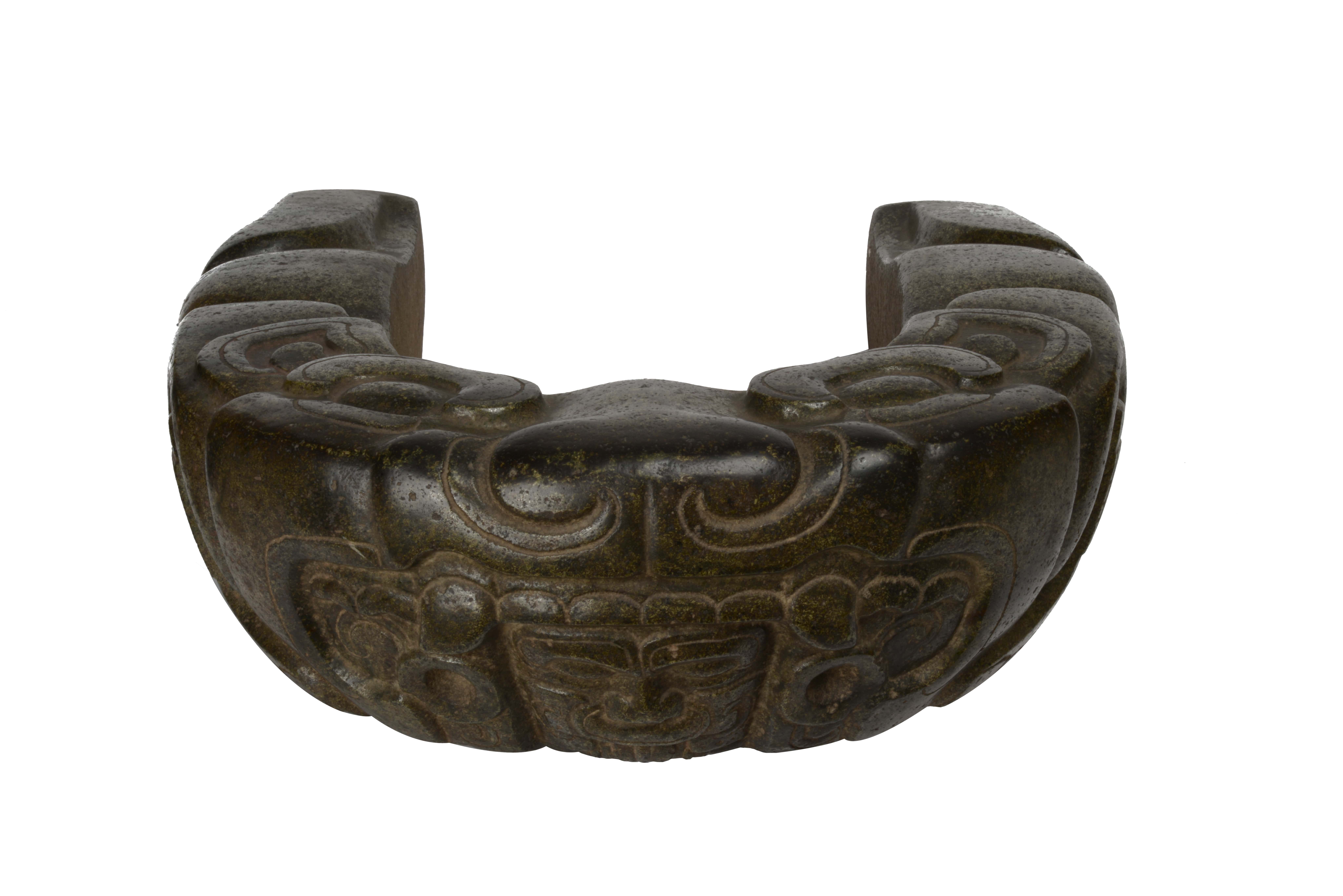
Pre-Columbian and Western Art Collection
Green Stone Yoke Mexico 500-900 C.E. Stone Size: 10.2x27.5x39.5 cm. Acc. No. 67.435 The yokes, palmas, axes (hachas) are associated with Ball game. ‘U’ shaped yokes are carved with stylised designs of animals, birds and religious symbols. Jaguar Yoke from Totonac is carved in greenish stone in ‘U’ shape. A jaguar is carved in the centre with clear nostrils, mouth and eyes on the front, holding a human head in its jaws with the stylised body and legs extending on either side. While their purpose is yet to be known, it is commonly believed that they represent the belts worn by the players of a ballgame.
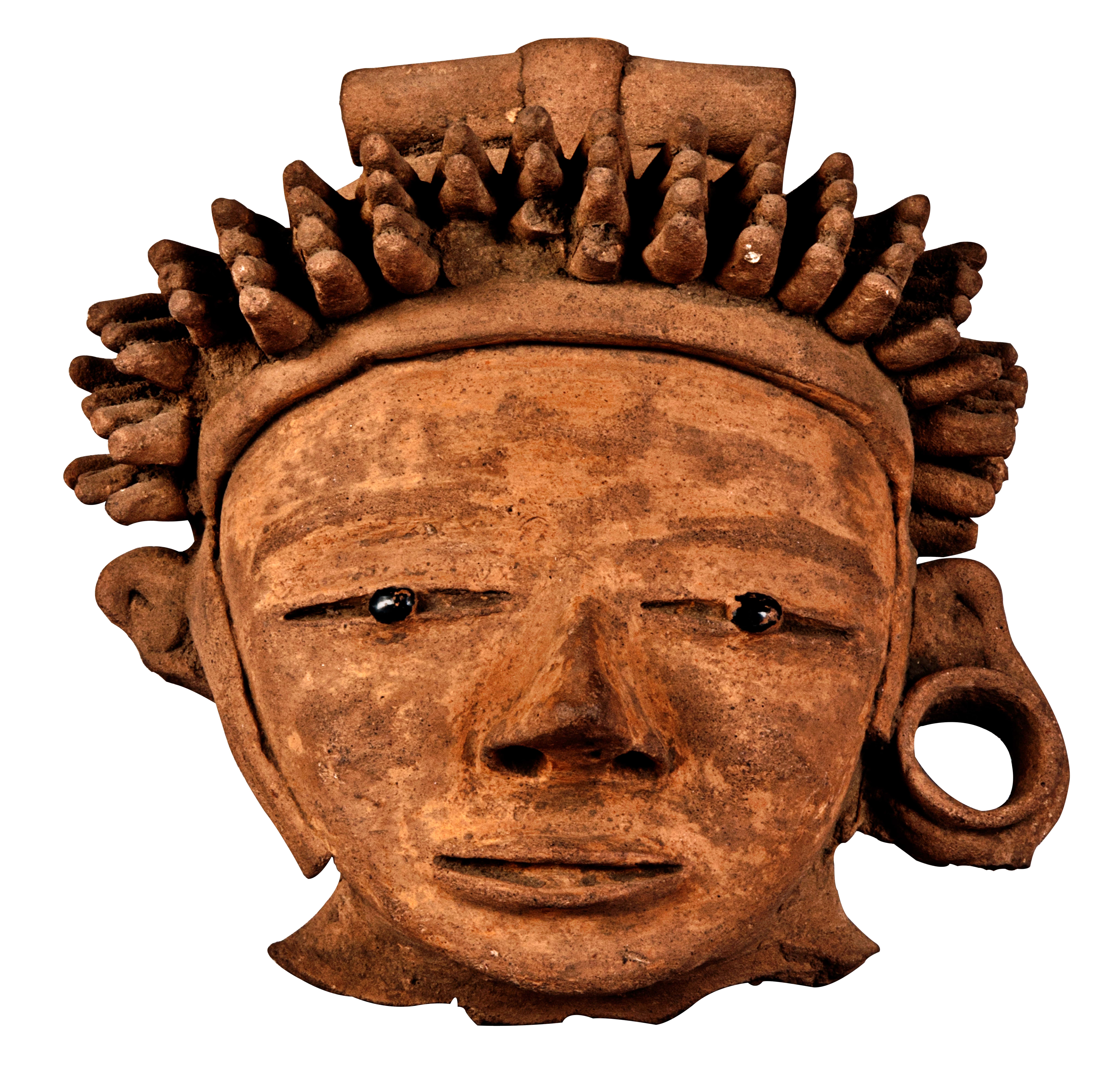
Pre-Columbian and Western Art Collection
Large human head Vera Cruz, Mexico 500-900 C.E. Clay Size: 19.3 cm. Acc. No. 67.467 The large human head is made of clay and a natural buff smoothed the head with a spiked headdress held by a trap. Some of the spikes and the right ear are missing and the left ear is wearing a decorative ring. It has a wide face and a beautiful headdress. The peoples of the Gulf of Mexico region continued into historic times the high level of artistic expression which characterised the early La Venta Culture. The Totonacs of the central coast of the Gulf of Mexico, in this terracotta “Human Head’ and the finely carved stone ‘Yokes’, Palms and Axes, of ceremonial significance, are notable for outstanding and distinctive artworks in both clay and stone.

Pre-Columbian and Western Art Collection
Gold Crown Peru, Inca 1400-1532 C.E. Gold, Size: Ht.-37.5 cm, Dia. - 20.7 cm Acc. No. - 67.572 The gold crown consists of a circular band with a double row of a tiny hole. A tall egret is flaring at the top. The egret has three heads of priests embossed on it, and it culminates in four divisions on top. The depiction of the figures of priests is probably an indication that the Inca kings combined in their kingship the two offices heads of administration and religion. The Inca ruler’s crown was distinguished by a headband (Iiautu) on a scarlet with small golden tubes fell on his forehead. Similar gold crowns with the only plume have also been found, possibly indicating the lower status. Some have been found attached to a plain-sheet-gold head-band, and others, especially on the south coast, were inserted into the head wrappings of wooden masks.
Pre-Columbian and Western Art Collection
Wooden bowl North-West Coast, U.S.A. 19th century C.E. Wood Size: 20 cm. Acc. No. 71.471 This jet black artefact designed like a black bear holding a stick in its mouth is a wooden vessel, a ceremonial bowl used during a al feast. It is painted in black using abstract decorative patterns. The bowl is an exceptional example of high and low relief techniques. The artefact has been provided with an opening at the top. Vessels, particularly a bowl, consisting of a seated human or animal figure, especially with strong abstract designs rendered in black.
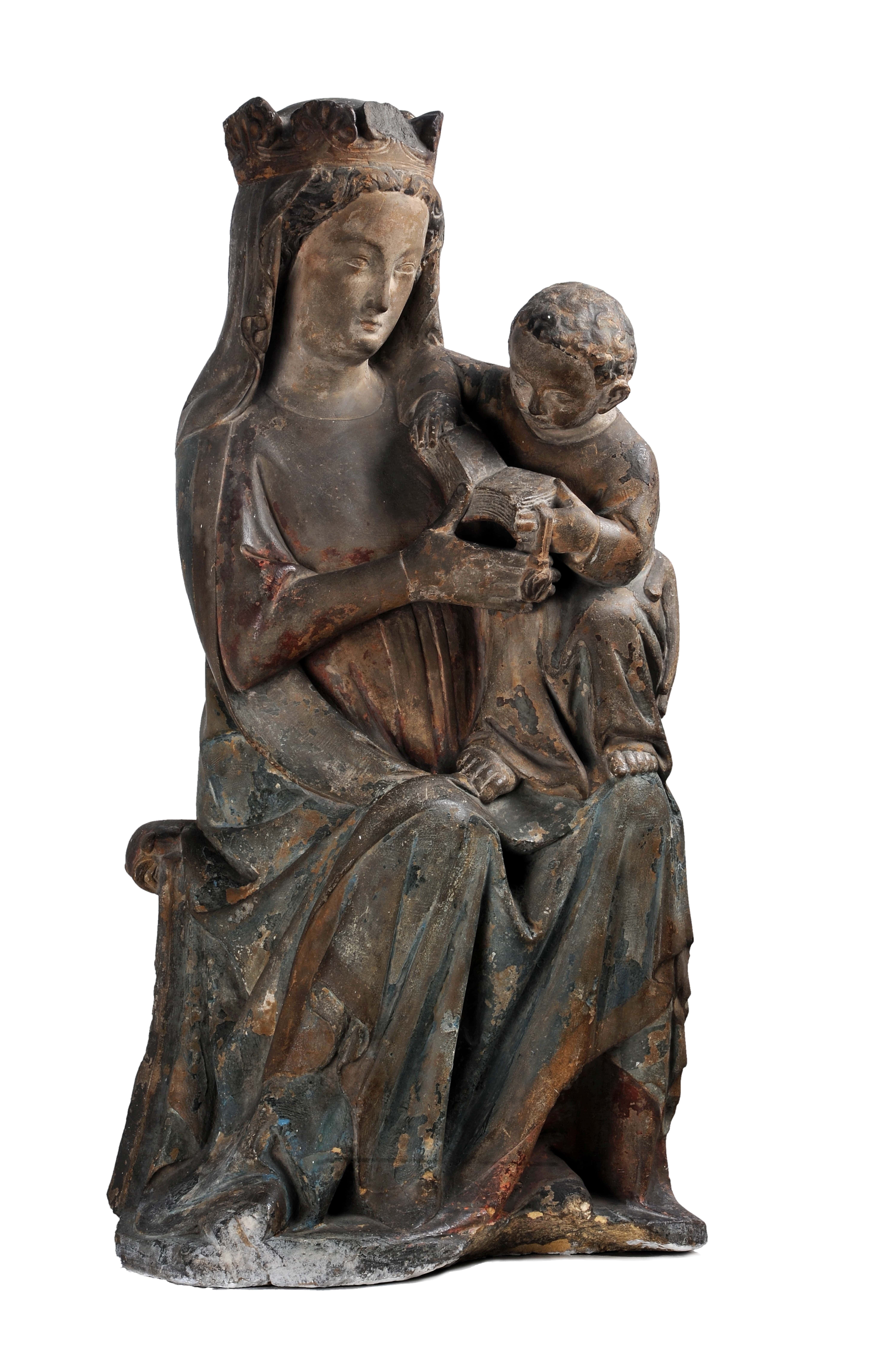
Pre-Columbian and Western Art Collection
Virgin Mary and Child France 13th Century C.E. Stone Size: 70x31.5 cm. Acc.No. L.670 Virgin Mary and Child Statue are Very popular in Christian art. Mary is the mother of Jesus. Mother Mary gave birth to Christ but was still a virgin, that’s why she is called the Virgin Mary. She is also known as Madonna who represents either alone or with her child Jesus. This statue is made of polychrome stone. The Virgin Mary seated upon the throne and the child is seated in her lap reading a book, held by mother Mary in her right hand (Reading book by a small child represents his divine nature). The child is steadied by His mother's half around Him. His right elbow resting on her shoulder. Mary is shown having a beautiful oval but heavier face with a soft, serious expression. She is wearing a wild rose crown and red robe covered by a blue mantle. The blue colour of her clothing symbolised purity, virginity and royalty. Folds of her drapery are depicted very beautifully in a natural way. The Virgin Mary is regarded as the Queen of Heaven and with the child Christ in her lap; she represents the Throne of Wisdom.
